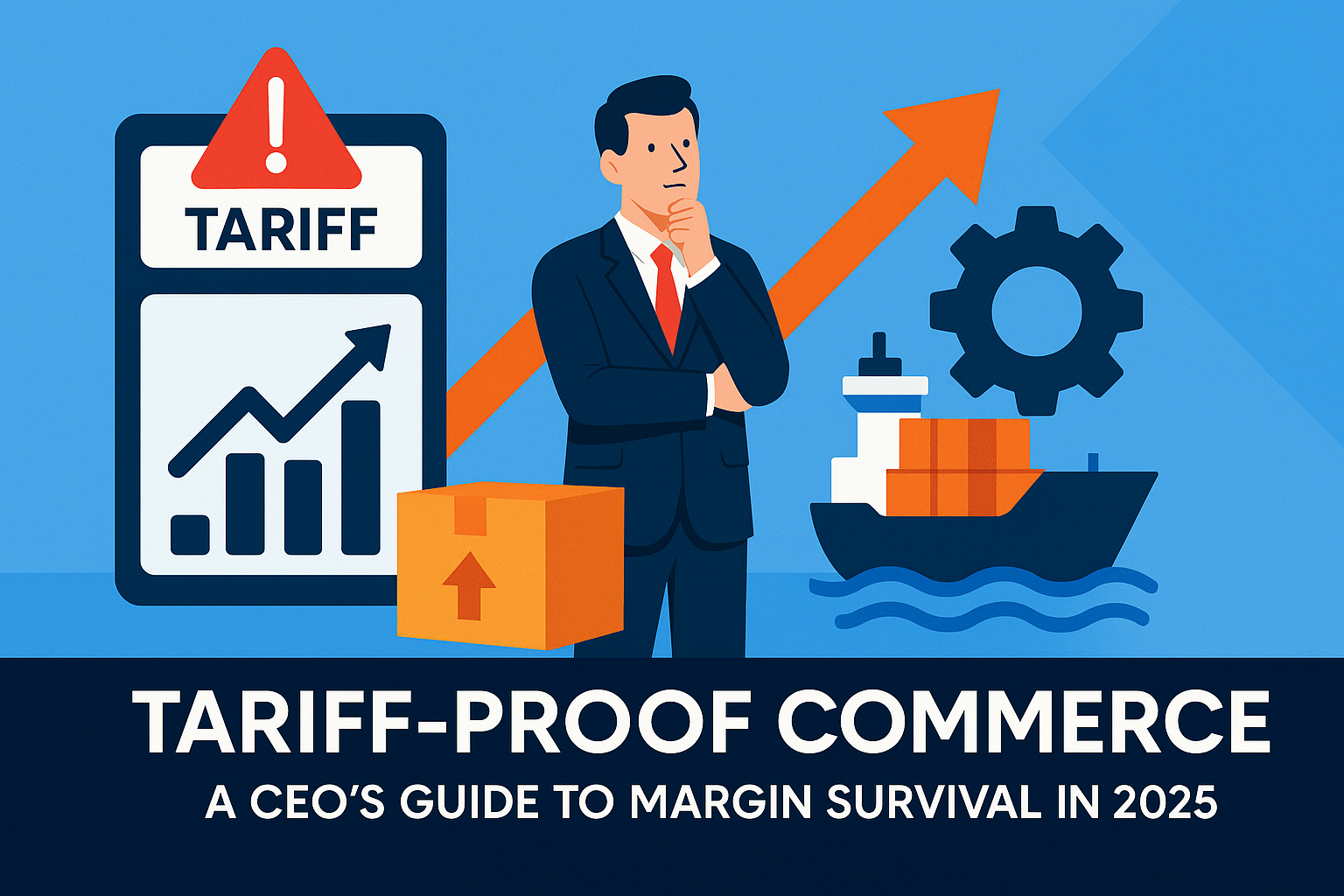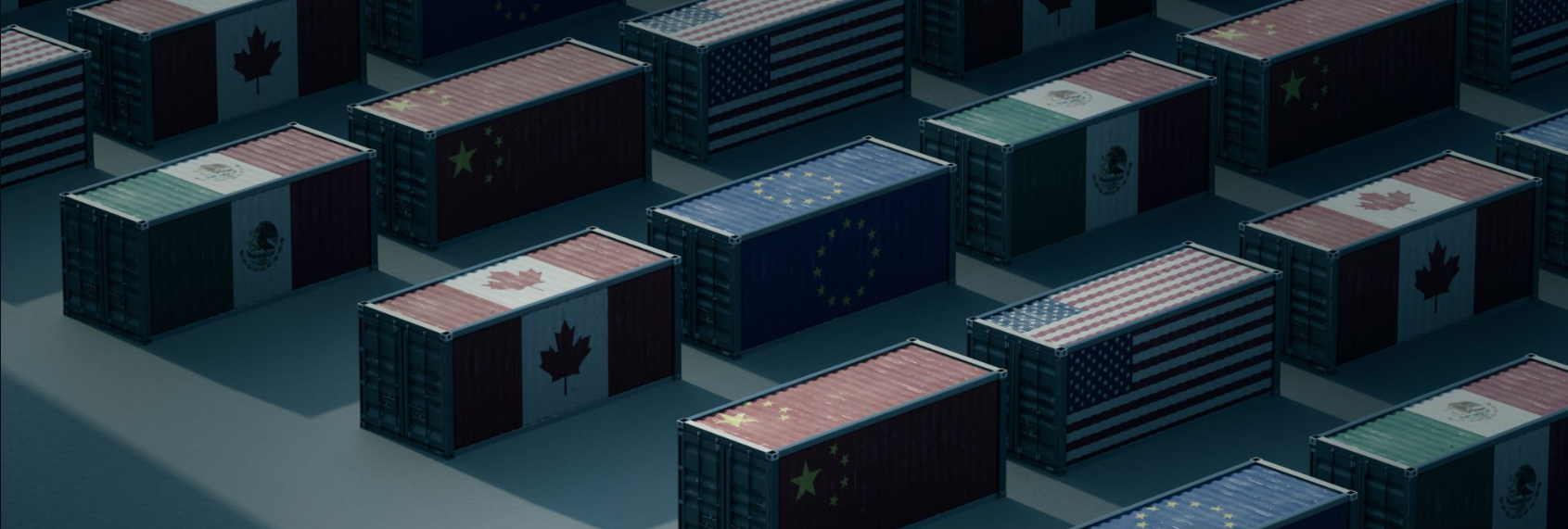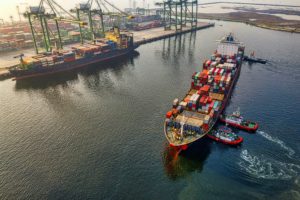For ecommerce CEOs, the next threat to margin isn’t a competitor or platform change—it’s policy. As 2025 trade shifts accelerate, understanding how tariffs impact your cost structure is no longer optional. This is your operational wake-up call.
The Margin Risk You’re Not Pricing In (Yet)
How Political Volatility Becomes Your New COGS
Most ecommerce CEOs didn’t see it coming — not until Q2 earnings dipped unexpectedly, or worse, flipped negative. But the hit was already in motion, seeded in policy drafts months before ballots were cast. The danger wasn’t buried in some obscure supply chain memo or international trade journal. It was hiding in plain sight—in the subtext of campaign speeches and transition briefings. As of May 2025, the new U.S. administration has confirmed its intent to pursue aggressive trade rebalancing policies. Both 2024 presidential candidates had campaigned in this direction, and now those policies are becoming a reality. Tariffs are back—wider, sharper, and moving faster than anything we’ve seen since 2018.
Your Landed Cost Is Now a Political Variable
This time, the categories under threat aren’t fringe. We’re talking electronics, home goods, textiles, batteries, plastics—products that define the import backbone of U.S. ecommerce. Early modeling suggests potential duties reaching 60% on finished goods, and it’s not just a China conversation anymore. Mexico, Vietnam, India—no sourcing zone is exempt. What began as a China-centric policy is now expanding rapidly to other countries, erasing the safety net many brands assumed they had. But the exact tariff number is beside the point. Here’s the shift CEOs need to internalize: your landed cost isn’t just a number anymore—it’s a political variable. In this environment, government policy doesn’t just shape trade—it rewrites cost structures overnight, forcing operators to adapt or bleed. It now fluctuates not only with freight rates or fuel surcharges, but with the trade policy agenda emerging from Washington.
That reality introduces a new kind of exposure. If your business is currently skating by on 100 to 300 basis points of margin between landed cost and retail price, your entire fourth quarter could hinge on a single policy decision made far outside your control. The real danger of tariff increases isn’t just the cost—it’s the delay in reaction time that magnifies the damage. That’s not just a margin risk—it’s structural fragility, dressed up as business as usual. And most leadership teams don’t even see it coming, because they’re not modeling their business at the right level of granularity.
What Most CEOs Are Missing
Between Q3 2024 and Q1 2025, we’ve reviewed over 200 ecommerce catalogs across mid-market and enterprise clients at Ecommerce.com and Optimum7. What we found was unsettlingly consistent.
- SKU-level margin sensitivity modeling is almost nonexistent.
- Domestic or nearshore supplier redundancy is more of a pitch deck buzzword than a real operational capability.
- Tech stacks are rarely wired to trigger pricing logic based on cost volatility.
- P&L planning is static—built for predictable seasons, not political inflection points.
Most ecommerce businesses are still operating like it’s 2019. Spreadsheets run the show. Hope fills the gaps.
Before You Panic, Check Your Systems
But this isn’t a call to panic. It’s a call to reposition.
You don’t need to blow up your supply chain or replatform overnight. What you need is elasticity—across your ops, your SKUs, and your systems. You need to pressure-test your unit economics under realistic stress scenarios. You need to wire your ecommerce infrastructure for flexibility, so that when volatility hits, your margins bend instead of break.
You need to start treating tariff exposure the way global enterprises treat currency risk: as a permanent factor in forecasting, not a one-time shock.
Next, we’ll move from headlines to hard numbers. Using modeled data from real clients—brands with complex SKU mixes, exposed freight paths, and high import dependency—we’ll show you exactly how fast gross margin erodes when policy shifts. We’ll break down three distinct tariff scenarios, show the fallout in dollars and days, and unpack what operators could’ve done differently if they’d seen it coming just weeks earlier.
Because here’s the truth: you don’t need to be caught off guard. But if you’re not modeling risk now, it’s only a matter of time before it shows up—unannounced—in your numbers.
Three Scenarios That Could Break Your Gross Margin (and How Fast)
Stress Testing: How Fast Your Margin Can Collapse
To understand what’s really at stake, we have to move beyond general warnings and step into modeled reality. These aren’t doomsday hypotheticals. They’re real outcomes, backed by data, drawn from operators managing complex SKUs, fragile sourcing paths, and razor-thin margins.
In early 2024, we ran multiple stress simulations for clients across categories—from DTC home brands to electronics, apparel, and hybrid marketplace sellers. We focused on one core question: Since tariffs have begun to spike post-election, how quickly—and how severely—does your gross margin erode?
We modeled three scenarios, each anticipating that new tariffs could take effect within 60 to 90 days post-election. As of May 2025, the early signals confirm that Scenario One—light tariffs on plastics and electronics—is already unfolding. Brands that survived similar tariffs in 2018 did so by pivoting quickly—not by waiting for clarity that never came. That aligns with historical trade cycles, where major policy moves often accelerate right after an administration shift.
What emerged from those simulations wasn’t abstract. It was granular. Tied directly to SKU-level economics, platform capabilities, fulfillment strategies, and supplier dependencies. What follows are the top line summaries of each scenario, showing just how fast a profitable operation can start bleeding margin—and why most won’t even realize it’s happening until it’s already too late.
Scenario 1: Light Tariff, Heavy Impact (15% on Plastics & Electronics)
This scenario is already in motion. As of Q2 2025, 15% tariffs have been reinstated on Chinese-origin plastics and entry-level electronics—categories that define the cost structure for many ecommerce operators in home goods, gadgets, and kitchenware.
The margin erosion was immediate. Landed cost per SKU jumped between 7% and 12%, depending on product weight and packaging efficiency. That might sound manageable in isolation, but the impact cascaded quickly. Gross margins compressed by three to five percentage points almost overnight, with low-ticket SKUs—especially those under $30—slipping underwater.
And then the second-order effects kicked in: without a real-time pricing strategy, even the strongest brands will misfire—either by eating margin or scaring off customers. Teams raised retail prices to protect contribution margin, which triggered higher cart abandonment, particularly in mobile sessions. When price increases are reactive rather than modeled, they create friction at the cart level and trigger a chain reaction of lost conversion and misdiagnosed performance. Conversion dropped, but instead of isolating pricing friction, teams misdiagnosed the issue as weak media performance. So they pushed harder on promos—and unintentionally made it worse.
Scenario 2: Nearshore Shockwave (+25% on China + Mexico)
This scenario is accelerating. As of May 2025, policy momentum is building around expanded duties—not just on Chinese goods, but also on imports from Mexico, including textiles and furniture. What many brands once considered a safe nearshoring hedge is now part of the risk surface.
When we modeled this, we assumed a 25% tariff across all Chinese-origin products and layered in new duties on key Mexican categories. The result? Landed costs spiked between 15% and 22%. Fulfillment windows stretched by 3 to 5 days for non-domestic 3PLs. Gross margins fell as much as nine points across import-heavy product lines.
One midsize brand—otherwise stable—saw a modeled EBITDA hit of over $2 million annually from this policy shift alone. Not because their products stopped selling. They sold just fine. But every unit shipped bled more profit. And in some cases, quietly crossed into loss territory without anyone noticing—until it showed up in the P&L.
Scenario 3: Full-Scale Trade War (45–60% Tariff Spike)
This is the worst-case scenario—and while it hasn’t hit yet, it’s on the table. As reciprocal tariffs gain traction globally, brands are no longer just reacting to U.S. trade policy—they’re caught in a feedback loop of retaliatory pricing across regions. Trade envoys are signaling heightened tensions, and if negotiations break down, we could see sweeping tariff escalation on high-dependency finished goods within the next two quarters. The looming risk of retaliatory tariffs adds another layer of uncertainty, where each policy move from the U.S. could trigger a pricing backlash from key export regions.
In our modeling, we examined what happens if tariffs spike between 45% and 60%—especially in categories like electronics, home improvement tools, and consumer plastics. This wasn’t just margin pressure. This was the cliff.
Landed cost shocks of 35% to 50% rendered dozens of top-selling SKUs immediately unprofitable. Some had to be de-listed on the spot. Others were salvaged only through emergency bundling or fulfillment rerouting—strategies that worked for those who had planned in advance, and wrecked operations for those who hadn’t.
When cost shocks hit at this level, response time isn’t a KPI—it’s survival. The businesses that had modeled this risk early were able to shift. The ones that hadn’t? They reached for blunt instruments: blanket discounts, frantic supplier outreach, deferred shipping promises. NPS dropped. Trust eroded. And they found themselves playing defense in a market that punishes delay.
Tariffs Won’t Break You—Rigidity Will
What these scenarios prove isn’t that tariffs will ruin every ecommerce business. It’s that margin resilience isn’t about the tariff—it’s about preparation.
Most operators are running businesses with no embedded elasticity. They’ve built platforms that assume cost consistency, pricing systems that can’t adjust dynamically, and logistics networks that depend on single-region flows. The result is exposure—not just to margin volatility, but to brand erosion when delivery windows widen and customers lose confidence.
And this is the real gut-check:
If a 15–30% landed cost surge hit your top 50 SKUs tomorrow, would you know what to do? Could you reprice in hours, not weeks? Could you bundle profitably, reroute fulfillment, or switch sourcing paths in days, not weeks, without grinding operations to a halt?
Or would you wait, react, and bleed?
This isn’t about tariffs. It’s about your systems. Your blind spots. Your preparedness.
How to Tariff-Proof Your Business Without Setting Fire to EBITDA
Building Leverage Without Burning Margin
Forget the slogans. “Reshoring” sounds noble on a podcast, and “dual-shoring” wins boardroom points—but without precision, either one can detonate your margins faster than any policy shift.
What you need isn’t geographic loyalty. What you need is optionality. The ability to adapt on demand—by SKU, by region, by fulfillment path—without dragging excess cost through your entire operation. The goal isn’t to uproot your supply chain. It’s to build leverage—margin flexibility embedded deep enough that a single tariff headline doesn’t leave you bleeding.
Map SKU Risk Before It Becomes Margin Loss
That starts at the SKU level.
Most teams still think in categories or revenue bands—but tariffs don’t hit categories. They hit SKUs. What matters is which SKUs bleed first. You need to segment your catalog based on three key dimensions: margin buffer, fulfillment flexibility, and price elasticity.
In plain terms, you need to know:
- Which products can survive a 10–30% landed cost bump
- Which can be warehoused or shipped from alternate regions
- Which can absorb price changes without killing conversion
The result isn’t just insight—it’s a map. A SKU heatmap, where:
- Tier 1: These are your margin anchors—high-profit, low-volatility SKUs you can count on even when everything else gets shaky.
- Tier 2: They ride the edge. Profitable today, but one cost spike or fulfillment hiccup could push them into the red.
- Tier 3: This is where risk lives. Fragile margins, heavy import dependency, no room to breathe. These SKUs don’t just wobble—they sink first.
If you don’t have that breakdown, you’re not managing your catalog. You’re gambling with it.
Dual-Shoring — Done Smart, Not Expensive
Once you know where your vulnerabilities live, the next move is building strategic redundancy—but doing it in a way that doesn’t double your cost base.
That’s the art of dual-shoring done right.
We advise clients to start with the top 20% of their revenue-driving SKUs. Skip the full catalog. Skip the vanity reshuffle. Focus on the SKUs that would gut your margin if costs shift.
For those SKUs:
- Activate a second-source supplier based in the U.S. or a nearshore region
- Test the economics with a domestic 3PL that allows low minimums, not long-term lock-ins
- Configure your ecommerce platform—Shopify, BigCommerce, or headless—to treat those SKUs as dynamic
That means:
- Tagging variants by region
- Using tools like Shopify Markets or Flow to route fulfillment based on shipping urgency, customer location, or tariff exposure
Your platform can probably handle all of this. The deeper problem isn’t capability—it’s inertia. Teams have the tools. They just haven’t turned them on.
Make Your Platform Respond to Cost Pressure
Beyond fulfillment, the tech stack itself needs to become an agent of elasticity.
Your backend systems should do more than display products and process payments. They should respond to volatility in real time.
That means:
- Building rules for auto-routing fulfillment when warehouse availability or tariff exposure shifts
- Enabling dynamic pricing at the SKU level based on changes in landed cost—triggered via webhooks, middleware, or native pricing engines
- Bundling with intent—hiding high-cost SKUs inside kits anchored by high-margin, tariff-insulated items
If your platform can’t flex under pressure, it’s not enabling growth—it’s standing in the way of it.
Understand Landed Cost as a Living, Moving Target
And then there’s landed cost—the misunderstood centerpiece of this entire equation.
Most finance teams still treat it as an afterthought, something that gets added up after the container clears customs. Supplier invoice, freight, duties—call it COGS and move on.
If your cost model only shows up after the container lands, that’s not forecasting. That’s playing catch-up.
What you really need is a dynamic landed cost model that accounts for scenario shifts. One that lets your CFO simulate what happens if tariffs spike 15%, 30%, or 45%—and then cascades that impact across:
- SKU margin
- Category profitability
- Fulfillment cost
- Paid CAC
- Total EBITDA
This isn’t administrative overhead. It’s strategic infrastructure. Because when volatility hits, the only thing that matters is whether your numbers can bend without breaking.
Real-World Case Study — From Exposure to Leverage in 60 Days
From Single-Source Risk to Margin Flexibility in 60 Days
Let’s make this real. Here’s what it looks like when an ecommerce brand doesn’t just talk about tariff-proofing—but actually builds it into the bones of their business.
Implemented in late summer 2024, their margin insulation strategy is still outperforming peers who remain dependent on single-source imports. They’ve maintained strong conversion rates, healthy repeat purchase behavior, and steady customer acquisition through paid channels.
But beneath that surface, the cracks were real—and deep.
Eighty-seven percent of their inventory was sourced from a single supplier in Guangdong, China. That supplier handled everything from packaging to labeling, which fed directly into ocean containers bound for California. Fulfillment was handled exclusively through a 3PL on the West Coast, and while the setup was efficient, it was rigid.
- No domestic redundancy
- No regional routing flexibility
- No SKU-level pricing triggers
The entire revenue engine was running on a single sourcing path—with zero room for geopolitical error.
How Margin Erosion Showed Up in the Model
When we ran our landed cost simulation—asking a simple question, “What happens if tariffs on finished goods double from 15% to 30%?”—the numbers were hard to ignore.
- $2.8 million in projected annual gross margin erosion
- 31% of SKUs would become unprofitable overnight
- Fulfillment cost + duty combinations caused blended margin to fall below 35% across high-velocity categories
And without a way to pivot quickly, they would’ve had to make hard decisions in a panic—deactivate bestsellers, eat the margin loss, or rush to find a backup supplier with no infrastructure in place.
That didn’t happen—because the CEO didn’t wait to be surprised.
The Playbook: SKU Clarity, Selective Shoring, Smart Routing
We mapped a response. Here’s how it played out.
- Built a SKU-by-SKU profitability model across five different tariff scenarios
- Tagged every SKU with one of three labels: Absorb / Volatile / Exposed
- Identified 73 SKUs with high volume + margin sensitivity
- Onboarded a U.S.-based 3PL with low-volume testing capacity
- Mirrored those SKUs in Shopify, tagging them as “domestic variants”
- Used Shopify Flow + Markets to route fulfillment dynamically
- Updated PDPs with variant-select logic based on customer geography
This wasn’t a full migration. It was a controlled hedge—driven by SKU economics, not emotion.
What 60 Days Delivered
By October 2024:
- 29% of the company’s volume was shipping from U.S. warehouses
- East Coast delivery times improved by 1.5 days on average
- West Coast cost-per-order remained stable
- Customer NPS rose 12 points
- SKUs previously flagged as “exposed” were removed from ads and placed in margin-protective bundles
But the biggest win? Control. Not from tearing everything down—but by building just enough elasticity to move when it mattered.
As the CEO put it:
“This is the first time I’ve felt in control of our cost structure since COVID.”
The 90-Day CEO Action Plan for Tariff-Proof Commerce
If you haven’t done this yet, your margin exposure is compounding with every new tariff policy rolling out in 2025. This isn’t hypothetical anymore—it’s here, and it’s hitting line items faster than most CFOs can reforecast.
In this new phase of economic volatility, the private sector can’t afford to wait for clarity—agility has to be built before the next policy wave hits. By now, the risk should be clear: tariff escalation is no longer a political “what if.” It’s a structural reality baked into global commerce. The goal isn’t to predict the next spike—it’s to build an operating system that can adapt, absorb, and pivot without bleeding margin or trust.
That’s why this phase is critical. Forward-thinking businesses aren’t waiting to react—they’re engineering flexibility now, before policy shifts show up on the P&L. You don’t need a full overhaul. You need a focused, tactical sprint—twelve weeks of deliberate execution that repositions your business from exposed to elastic.
Weeks 1–2: Visibility Comes First
Start by confronting the numbers directly. Have your finance and ops teams pull your top 100 SKUs by revenue and gross margin. For each SKU:
- Tag the country of origin
- Break down landed cost (freight, duties, handling)
- Identify the current fulfillment path
Then simulate margin performance under three stress scenarios: what happens if tariffs rise 15%, 30%, or 45%?
You’re not aiming for perfection. You’re hunting for exposure—SKUs that drop below your margin floor the moment your cost structure shifts.
Triage them:
- Tier 1: Stable
- Tier 2: Volatile but survivable
- Tier 3: High-risk
This should take hours—not weeks. If it doesn’t, your problem isn’t tariffs. It’s blindness.
Weeks 3–4: Test Redundancy with Strategic Shoring
Shift from diagnosis to action. You don’t need a full reshuffle. You need targeted pressure relief.
- Identify 10–20 mid-risk SKUs with high volume or high margin sensitivity
- Run test batches through a U.S.-based 3PL with low minimums
- Capture fulfillment data: cost, speed, customer experience
In parallel:
- Add frontend logic to PDPs that adjusts shipping promises based on customer region
- Use “Ships from USA” or “Fast Shipping” badges on select SKUs
- Monitor conversion shifts—especially on mobile
This isn’t branding. It’s margin insurance.
Weeks 5–6: Rewire Your Stack for Margin Signals
Most brands already have the tech. They just haven’t turned it on.
- Use Shopify Flow, Alloy, Pipe17, or middleware to automate fulfillment routing
- Set logic triggers for landed cost volatility or warehouse disruptions
- Dynamically reprice SKUs that cross cost thresholds
- Auto-bundle fragile SKUs with margin-protective anchors
- Enable Slack or email alerts tied to margin dips
If your stack doesn’t respond to cost pressure, you’re not in control—you’re just reacting.
Weeks 7–8: Align Finance and Marketing
Most growth strategies are still margin-agnostic. That’s a liability now.
- Sync margin data with Google, Meta, TikTok campaign feeds
- Suppress SKUs with <30% margin from ad spend
- Re-bundle SKUs that need protection or volume lift
- Adjust CPA targets based on actual contribution margin, not vanity ROAS
- Tier campaign structure by SKU risk: Stable / Volatile / Fragile
Your media budget is too expensive to waste on guesswork. Feed it reality.
Weeks 9–12: Reforecast and Align the Org
Bring it all together. This is where strategy becomes infrastructure.
- Rerun EBITDA forecasts under each modeled tariff scenario
- Cascade margin compression into fulfillment cost, CAC, and blended ROAS
- Cluster SKUs by contribution profile and risk tier
- Create a single operational artifact—shared across leadership and departments
The outcome? You don’t just have a contingency plan. You have a system that knows what to do when the next policy hits.
This isn’t just a spreadsheet. It’s your margin survival manual. It’s how your business stays flexible, responsive, and calm—while everyone else scrambles.
Tariffs Aren’t the Problem—Lack of Leverage Is
This was never just a conversation about tariffs.
It’s about whether your business can move—fast, precisely, and without bleeding margin along the way.
Tariff volatility is just the pressure test. It reveals what your systems are built on—or what they’re missing. And it shows up where it hurts most:
- In your supply chain logic
- In your pricing engine
- In your fulfillment stack
- In your CFO’s ability to forecast with confidence
Tariffs are external. Your leverage is internal.
The winners in 2025 are already emerging—and they’re not the ones who guessed right on policy. They’re the ones who stopped guessing entirely. The ones who had already built elasticity into their SKUs, automation into their platforms, and scenario modeling into their financial infrastructure—before the policy wave hit.
Successful businesses aren’t the ones that avoid volatility—they’re the ones that architect flexibility into every layer of their operations before volatility arrives. They’re the ones turning volatility into an operational advantage while their competitors scramble to patch holes in real time.
Reacting too late isn’t just costing margin anymore. It’s costing momentum. Trust. Relevance. In a market this competitive, with customers this price-sensitive and supply chains this fragile, delay costs more than ever.
Tariff spikes don’t care how strong your brand is. They hit everyone.
What sets you apart now is brutally simple: are your systems bending—or are they already breaking?
What Comes Next: Get Your Tariff Exposure Diagnosed—SKU by SKU
You don’t need to guess. You don’t need to build a new system from scratch. You just need a clear map of where the risk lives—and what to do about it.
That’s why we’re offering a no-cost, high-impact SKU-by-SKU margin exposure analysis for ecommerce operators who want to secure their Q4 before the policy rollercoaster begins.
Here’s what it includes:
- Full tariff scenario modeling at +15%, +30%, and +45%
- Gross margin impact mapped by SKU, category, and fulfillment path
- Domestic vs. import fulfillment ROI comparison
- Ecommerce tech stack audit (Shopify, BigCommerce, or headless) for elasticity and responsiveness
This isn’t an audit. It’s a margin defense plan—before the punches start flying.
You’ll walk away knowing exactly which products are carrying silent risk—and how to fix them before the market does it for you.
No guesswork. No noise. Just the truth about your risk—and what to do about it.
Curious what this means for your business?
Want a private walkthrough of your margin blind spots? Contact us.
Our ecommerce margin team will show you exactly where to look—and what to do next.










